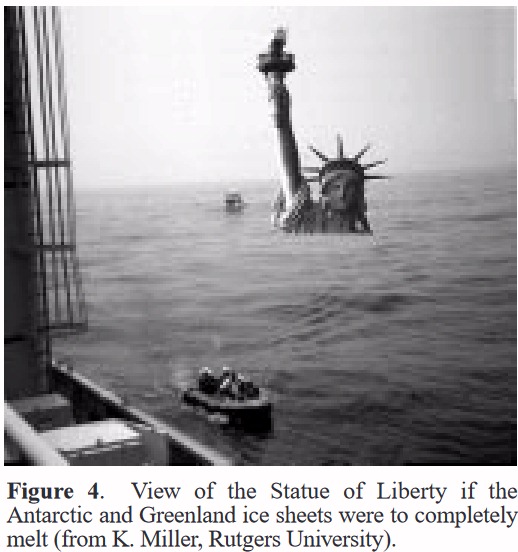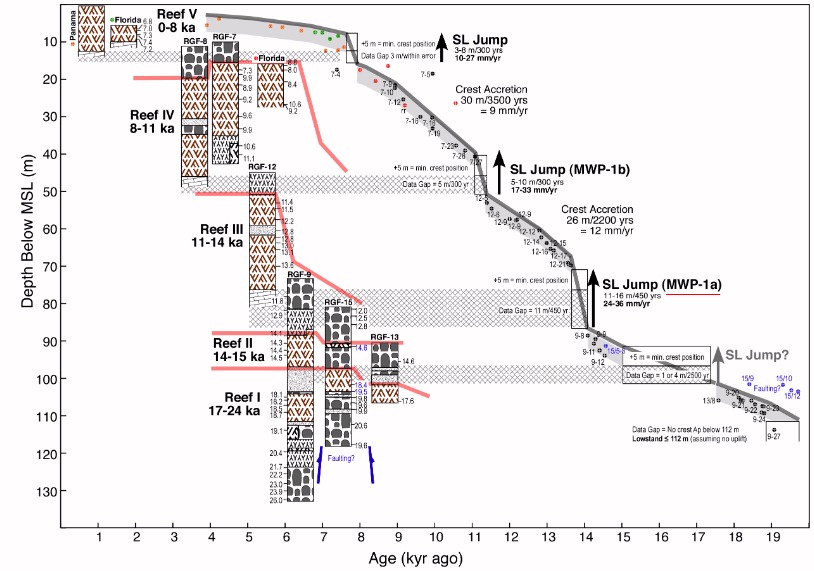LYRICS
(Verse 1)
Autumn whispers of a world unbound,
Where ice sheets crumble, no solace found.
Greenland’s tears, West Antarctica’s cries,
As melting shores meet relentless skies.
(Chorus)
What will become of our habitat’s plight?
As boiling tides rise, eclipsing the night.
Violent rain pounds, carving new streams,
As Earth’s fever rises, in feverish dreams.
(Verse 2)
Copernicus speaks of mind-bending heat,
As nations tremble, beneath nature’s beat.
Assets crumble, harvests fade away,
In the relentless heat of a changing day.
(Chorus)
(Bridge)
A 1.5-degree leap, a world ablaze,
Urgency screams, in a desperate haze. (World ablaze)
As violent rain reigns, across the land, (Understand?)
The future’s cast by an unforgiving hand. (ComprehEND?)
(Verse 3)
Hillsides crumble, shorelines drown in dread,
As violent rain reigns, upon our heads.
Deserts flood, in defiance of sky,
As the world grapples with a climactic goodbye.
(Chorus)
(Outro)
In the wake of chaos, and uncertainty’s stare,
We must unite, in a world laid bare.
As the seas rise, and the storms rage on,
We’ll face the challenges, until the dawn.
- Challenges–Until-the-Dawn-I.mp3
- Challenges–Until-the-Dawn-II.mp3
- Until-the-Dawn-Part-I.mp3 (unplugged to conserve energy)
- Until-the-Dawn-Part-II.mp3
- Until-the-Dawn-Part-II-Instrumental.mp3
- Until-the-Dawn-LH-Caasio-WK-3500.MID (Left Hand / also controlled Korg PS60)
- Until-the-Dawn-Yamaha-PSR-740.MID (Right Hand / also controlled microKorg and miniNOVA vocorder)
Chords: Em Am / Em Am C B7 Em / C D Em / D Em Em/9; Part II Heavy Metal / Rock Ballad @ 116 Beats Per Minute
Instrumentation: Vocals (TC-Helicon VOICELIVE and MiniNova Vocorder), Ibanez Acoustic Guitar (AW54CE), Ibanez Electric RG-270 (Vox ToneLab and Boss Digital Delay), Fender Jazz Bass (Boss Digital Delay), Keyboards (Korg PS60, Casio WK-3500, Yamaha PSR-740, MiniNova, MicroKorg)
ABOUT THE SONG
The above lyrics are a collaboration with ChatGBT. The song was composed using the information under “ABOUT THE SCIENCE” that was written by Daniel Brouse and Sidd Mukherjee.
ABOUT THE SCIENCE
By the Autumn of 2023, it had become evident the West Antarctic and Greenland ice sheets will completely melt. The process is irreversible and inevitable. What can Earthlings expect to happen to their habitat?
In The Reign of Violent Rain, Sidd said, “Now I am thinking the violent rain will be a bigger problem before we die… still thinking it through. In the long run, yes, sea level rise will hit big. If you look at the history, it is episodic, and in the fast bits it can go up 3 feet every twenty years for five hundred years (See MWP-1A in fig. 3, supplement). But, the rain intensity is increasing faster today, and drainage cannot cope, whether in the city or out, culverts and such put in over the last hundred years cannot handle. So, I am paying a lot of attention to terrain and drainage far inland from the seacoast (like Ohio.)
In the paper, Sea level and global ice volumes from the Last Glacial Maximum to the Holocene, Kurt Lambeck states, “The major cause of sea-level change during ice ages is the exchange of water between ice and ocean and the planet’s dynamic response to the changing surface load.”
On November 20, 2023, the UN’s Emission Gap Report found even if countries carried out their current emissions-reduction pledges, the world would likely continuously exceed +3C degrees of warming this century. Later that day, the International Cryosphere Climate Initiative released State of the Cryosphere Report 2023 saying, “Two degrees is too high. Our message — the message of the Cryosphere — is that this insanity cannot and must not continue. The melting point of ice pays no attention to rhetoric, only to our actions.”
What does this mean about our current human induced climate change?
1) We should expect to see rising sea levels.
2) Approximately half of the current sea level rise is due to thermal expansion. As water gets warmer, it expands. NASA says, “About half of the measured global sea level rise on Earth is from warming waters and thermal expansion.”
3) There is a very complex set of climate systems impacted by sea level rise. The shape of the Earth is changing and speeding up as ice from the poles melts and is drawn toward the equator through centrifugal and gravitational forces, as well as, glacial isostatic adjustment. A study published in Geophysical Research Letters of the American Geophysical Union suggests that global warming has led to significant melting of glaciers due to which our planet’s axis of rotation has been moving faster since the 1990s.
All of this has a great impact on our weather. The rain intensity is increasing faster today than ever known. The cool water from the melting ice at the poles is being drawn toward the center of the Earth and getting warmed to record high temperatures. The warm, moist air is circulating and moving over land. These changes in climate systems will cause other areas to experience unprecedented drought. The Amazon River and the Panama Canal recorded their lowest water levels on record during 2023.
What do we expect to happen?
The Long Run

We expect sea level rise will total about 270 feet over the next several millennia. In 1998, the State of New Jersey published Sea Level Rise in New Jersey with a depiction of the Statue of Liberty with 270 feet in sea level rise.
In the last melting of the glacial maximum, the first 500 years saw a “pulse” of high rate sea level rise of about 500 years duration resulting in about a 66 foot rise in sea levels.
A high rate of sea-level rise starting at ∼14.5 ka BP of ∼500 y duration. The onset occurs at the start of the Bølling−Allerød warm period. Its duration could be <500 y because of uncertainties in chronology, and the globally averaged rise in sea level of ∼20 m occurs at a rate of ∼40 mm⋅y−1 or greater. This pulse, MWP-1A, has been identified separately in the records of Barbados, Sunda , and Tahiti. Spatial variation in its amplitude can be expected because of the planet’s elastic and gravitational response to rapid unloading of ice in either or both of the two hemispheres with, based on the ice−earth models used here, model-predicted values ranging from ∼14 m for Barbados to ∼20 m for Tahiti. This compares with observational values of ∼15–20 m for Barbados and 12–22 m for Tahiti. Observational uncertainties remain large, including differences in the timing of this event as recorded at the different localities, and it is not possible from this evidence to ascertain the relative importance of the contribution of the two hemispheres to MWP-1A.
We expect to see a similar pattern in the long run.
Our estimate of 270 feet is based on “the safe” elevation to live — high-tides, waves, coastal flooding, storm surge, grade of shoreline, etc. would make the lowest elevations for living space to be at least 270 feet above pre-industrial sea levels. This would be the minimum elevation. Personally, I would not want to live that low. As the water submerges sewage treatment plants, landfills, chickens, cows, and all sorts of other bio-hazards, the waters will become toxic. In addition, much of the land will experience salinization making it unfit for plant life. Another concern for elevations under 800 feet is living on an island. Many locations at lower elevations will become isolated. Living on an island has many problems including fresh water, food, shelter, and healthcare. Security from pirates pilfering, raping, and plundering will likely be the overriding concern. Of course, I don’t expect that to happen for millennia, but I hope government planners do plan for it now. If you look at Florida as an example, parts of the coastline have seen sea levels rise over 14-20 feet in the last decade. Although the storm surge was only for hours, you wouldn’t want to live there during those hours. Not to mention, the frequency of these extreme weather events will rise exponentially. Thus, our recommendation to evacuate Florida now (i.e. Managed Retreat). The billions of dollars spent to rebuild after Hurricane Ida will all be for naught. Allowing building there will needlessly endanger property and lives. Parts of the world have already seen storm surges of 40 feet. I expect most North American coastlines will see sea levels rise, if only temporarily, by 20-40 feet this century. As far as long run sea level rise, much will depend on location, gravity, isostatic adjustment, and thermal expansion. If the ocean temperatures get warm enough (thermal expansion), parts of the world may see sea levels rise to 270 feet for long periods of times. Other parts of the world, like Greenland, may actually see sea levels decline. In any event, the Earth crossed tipping points this decade which make extreme sea level rise inevitable and irreversible in our lifetimes. Planners should plan on it.
Sidd reiterated, “That 270 feet will take a long time. I would be more careful about the violent rain than the ice melt.”
INTERPRETATION OF SCIENCE AND SONG
This song paints a vivid picture of the devastating effects of climate change, using powerful imagery and emotive language to convey the urgency of the crisis.
In the opening verse, the imagery of autumn whispers and crumbling ice sheets sets the tone for a world in turmoil. The tears of Greenland and West Antarctica symbolize the profound grief of the natural world as it faces destruction at the hands of humanity.
The chorus poses a haunting question about the fate of our habitat, as boiling tides rise and violent rain carves new streams. The repetition of “Earth’s fever rises” emphasizes the escalating nature of the crisis and the urgent need for action.
Verse 2 introduces the scientific perspective, with references to Copernicus and the mind-bending heat felt around the world. The imagery of crumbling assets and fading harvests highlights the real-world consequences of climate change on communities and economies.
The bridge amplifies the sense of urgency, describing a world ablaze with a 1.5-degree leap in temperature. The imagery of violent rain reigning across the land underscores the destructive power of extreme weather events driven by climate change.
Verse 3 continues the theme of destruction, with hillsides crumbling and shorelines drowning under the onslaught of violent rain. The defiance of deserts flooding speaks to the unpredictability and chaos unleashed by climate change.
The outro leaves listeners with a sense of determination in the face of uncertainty, urging unity in the face of the challenges ahead. The imagery of rising seas and raging storms underscores the magnitude of the crisis, while also hinting at the resilience of humanity in the face of adversity.
Overall, this song serves as a powerful reminder of the urgent need for action on climate change, drawing on both scientific knowledge and emotive storytelling to convey the gravity of the situation.
